
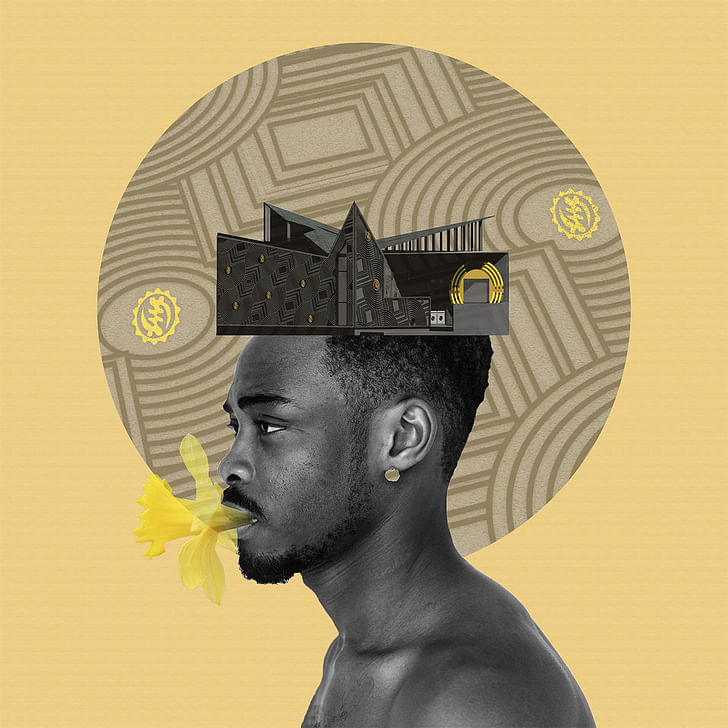
Demar Matthews is a recent M.Arch graduate of Woodbury University. We first met Demar with the publication of his article A Black Architecture Education Experience, a piece that propelled the young designer into a rigorous investigation of Black architectural aesthetics in America. Due to COVID-19, Demar was forced to rework his approach to his project and decided to curate all of his research on a website, offtopdesign.com, which is a work in progress. Demar's academic exploration of Black aesthetics is something he says he's only just begun.
He says this thesis is a first step to what he hopes will be a much longer and deeper path. I connected with Demar, to talk a bit more about his project and thoughts for his future.
Archinect's Spotlight on 2020 Thesis Projects: 2020 has been an extraordinarily challenging year for architecture graduates. Students were displaced as schools shut down, academic communities had to adapt to a new virtual format, end-of-year celebrations were canceled or changed dramatically, and now these students are graduating into an extremely challenging employment market. To support the 2020 class we're launching a summer series of features highlighting the work of thesis students during this unique time of remote learning amid COVID-19. Be sure to follow our 2020 thesis tag to stay up to date as we release new project highlights.
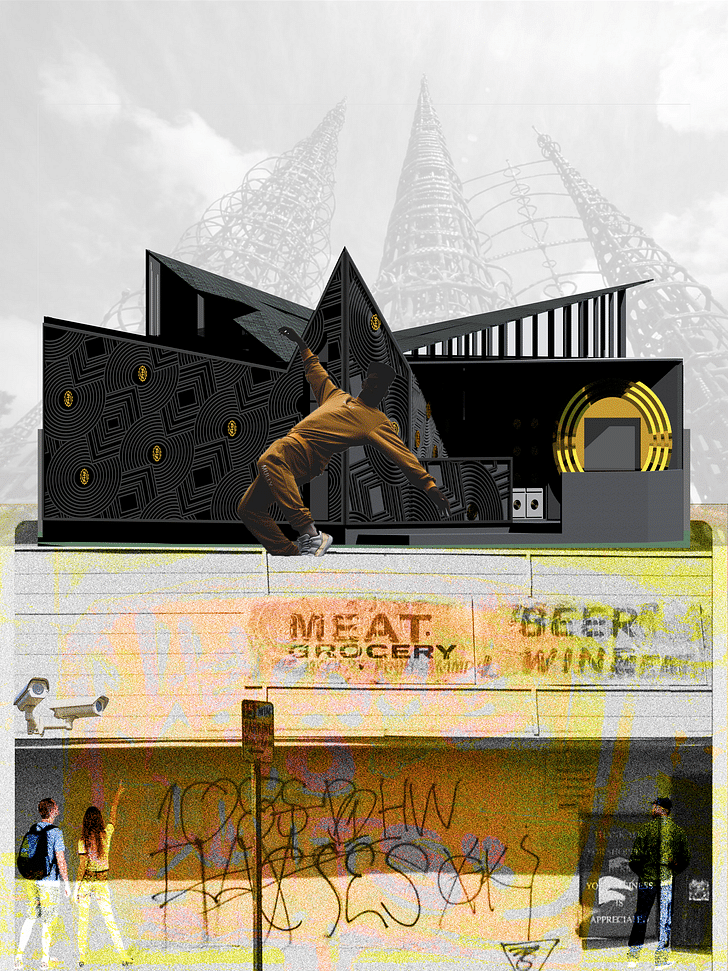
What is your thesis about and what was your inspiration?
A while back, my girlfriend and I were driving back to L.A. from visiting my mom. We were on the 101 freeway, and she spots this community off the side of the freeway that reminded her of her home back in Guanajuato, Mexico. This neighborhood she had noticed had a yellow house with red bricks and a Spanish style roof. This thought stuck with me, of what it felt like for me to feel like I was “home.” I realized I never feel that sense of pride she felt when I look at architecture. Where was the architecture that spoke to my identity as a Black person? This is the driving question in my thesis which seeks to develop and identify a Black aesthetic in architecture.
Where was the architecture that spoke to my identity as a Black person? This is the driving question in my thesis which seeks to develop and identify a Black aesthetic in architecture.
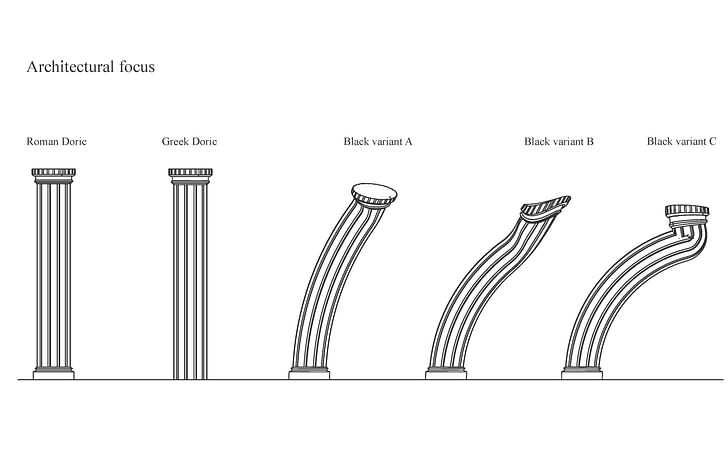
Moreover, my educational experience in studying architecture was a huge driving force in my exploration during my thesis. In my previous article, A Black Architecture Education Experience I talk at length concerning that.
In my view, it is hypocritical to fight for equity in the profession and academia, yet not fight for equity in the built environment.

How does your thesis fit within the discipline of architecture?
So many cultures have their own architectural styles based on values, goals, morals, and customs shared by their society. When these cultures relocated to America, to keep their cultural values intact, they bought land and built in the image of their homelands. This isn't true in historically Black neighborhoods. Until 1968, Black people in Los Angeles had no rights to own property; which meant while others began the race of acquiring land in 1942, building homes and communities in their image, we were held back behind the starting line. The Black community started running 476 years after the race began.
Researching the effects of this inequality in the built environment is the foundation of my thesis, and the start of my development of a Black aesthetic in architecture.
I think over the last 10 years there has been more of an attempt to “diversify the profession” in architecture, yet according to the numbers of Black architects/Black architecture professors, we’re still very much behind the curve. In my view, it is hypocritical to fight for equity in the profession and academia, yet not fight for equity in the built environment.
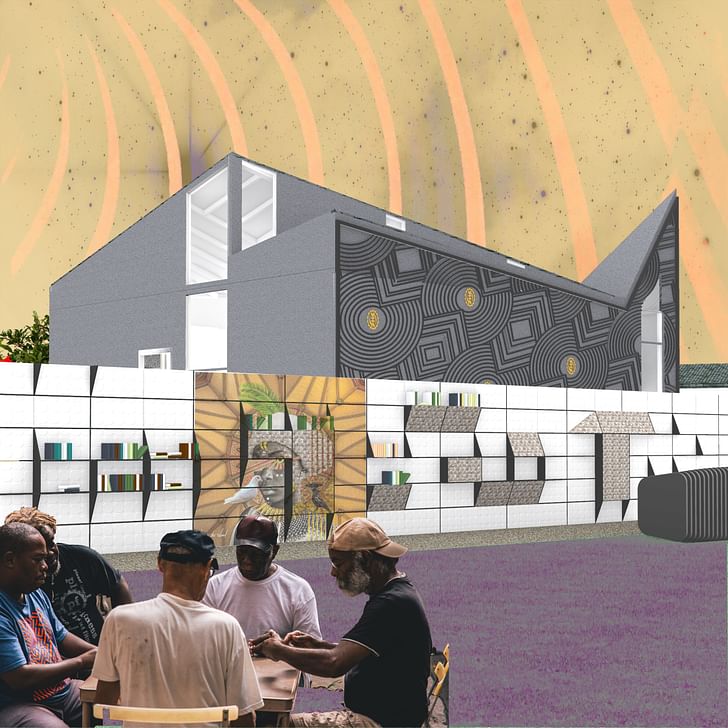
What were key learning moments during your thesis?
Getting drawings through the building department was a key learning moment. As students, we are often told what our responsibilities will be for the first couple years of being at a firm, and it is rarely something to get excited about. But to go through the building process from funding, finding engineers/contractors, all the way up to the permit phase taught me so much. It taught me how architecture can be used as a tool.
Once school went virtual, it made me take even more control of my thesis. I asked less permission or advice on things and just did what I wanted to do.
How did developing your thesis while working from home affect your workflow/decisions in producing the work?
Once school went virtual, it made me take even more control of my thesis. I asked less permission or advice on things and just did what I wanted to do. Since we no longer needed a physical model, I also switched my focus to digitally curating my work online (website, Instagram, LinkedIn). This turned out to be a big help because I got to get the opinions of a much larger audience than I normally would have, and it made my project respond to with the critiques and conversations I was having in real time.
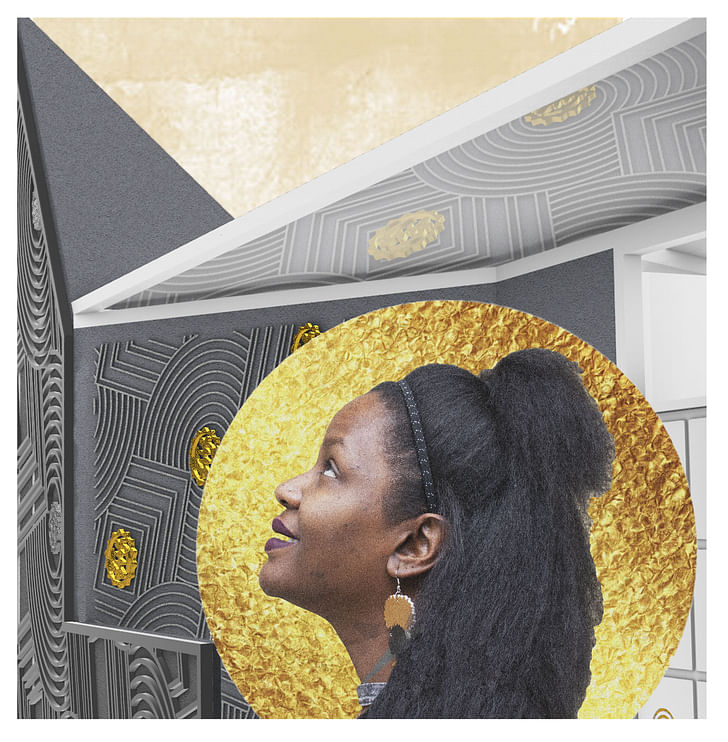
If you could do this again, what would you change?
I definitely would have reached out to architects/faculty at historically Black colleges/universities for advice and perspective. There has been work on this topic that I believe I missed the opportunity to tie into my work. I had a very established architect and author named Melvin Mitchell who reached out to me after seeing my thesis. He had so much wisdom on the subject matter to contribute and was asking the same questions I am asking now decades ago. I really wish I could’ve dove in on his work as well as the work of Jack Travis.
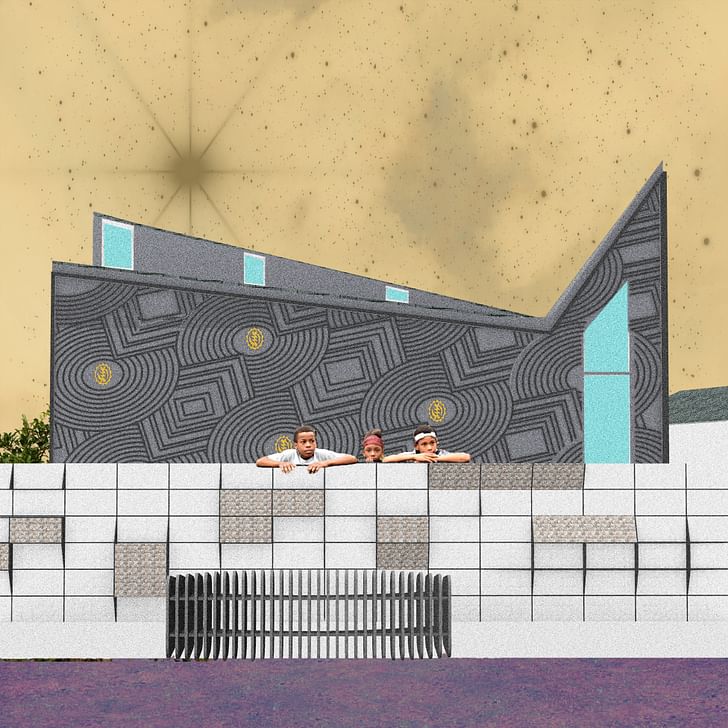
What do you think the current state of "thesis" is within architecture and how can it be improved?
I was very fortunate to be a student at Woodbury University and to complete my thesis there. There are programs where students don’t have the ability to choose what their thesis is, and while that freedom to choose any topic can be a burden, I really was able to take on something I was passionate about and that really helped me more than anything. My only critique of the state of the thesis within architecture is a proposal that academia as a whole considers allowing students to choose the topic of what is often thought of as the most important semester of their architectural studies.
I don’t believe there is a firm with a business model that fits the type of work I am hoping to do, so I am trying to carve out a bit of a different lane that is focused on improving the built environment in Black neighborhoods in America, through a culturally centered design approach.
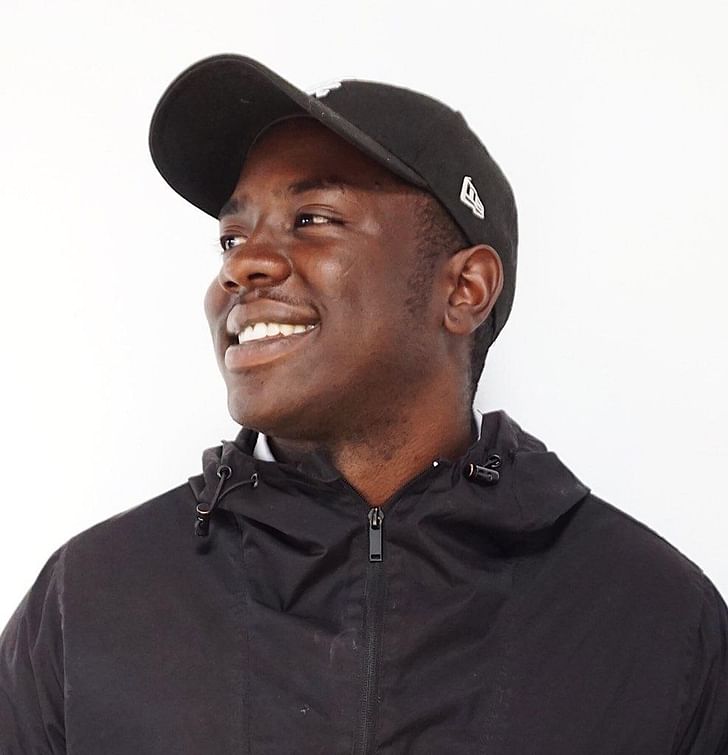
What are your next steps academically? Professionally?
This was my final semester of the M.Arch program, so the next step is finding the rest of the funding for this project in Watts, and getting it built. I am very fortunate that this thesis turned into a company (offtopdesign.com). I am also working on a six-unit multi-family project in Philadelphia, as well as a project with Destination Crenshaw. So, with a few contracts under my belt, I am going to go all-in on myself and attempt to not work at a firm. I don’t believe there is a firm with a business model that fits the type of work I am hoping to do, so I am trying to carve out a bit of a different lane that is focused on improving the built environment in Black neighborhoods in America, through a culturally centered design approach.
Any tips for students working through their thesis?
In the words of Nip Hussle, “It’s a marathon, not a sprint.”
Sean Joyner is a writer and essayist based in Los Angeles. His work explores themes spanning architecture, culture, and everyday life. Sean's essays and articles have been featured in The Architect's Newspaper, ARCHITECT Magazine, Dwell Magazine, and Archinect. He also works as an ...
8 Comments
Firstly, I'm shocked to read and realise that Black people couldn't even own property in Los Angeles until 1968!
Second, it would be interesting to also see the same architecture without people in them, just to see if the sense of aesthetics actually still stands and evokes that same sense of pride.
And finally, to perhaps find also a more three-dimensional articulation of these Black Techniques, it feels to me like a flat surface treatment or pattern whereas it could maybe also be more of a three-dimensional surface manipulation based on those same techniques.
Good luck carving out that lane!
This is the kind of work I like seeing. Thanks for sharing Demar!
Inspiring insight. I really look forward to seeing all that's to come from him!
This young man is on the right track. I remember receiving and witnessing harsh critiques (of course, there was only one other Black man in my studio) for elements of a design that even ventured this way. I'd often try to attach some semblance of Blackness to a project as an afterthought so I commend this bolder approach. I still recall a comment from a guest juror reacting to a project of mine and a very simple border using a Pan African colors motif, and the bewildered look on her face as she said "what exactly is this supposed to imply?" If I could do it all over again, I'd probably say that the question alone speaks volumes. We've been mostly invisible in this profession. Pethaps a new day approaches
AIA Member education/internships/hiring FALLS SHORT.CONTINUOUS QUARTERLY REMINDERS to members and schools can help.OUTREACH+TOLERANCE
AIA demographicshttps://www.ncarb.org/nbtn2017/demographics#:~:text=Gender%20Equity%20Improves%20Along%20All%20Career%20Stages&text=In%202016%2C%20women%20accounted%20for,to%2034%20percent%20in%202015.
NATIONAL demographics
https://www.census.gov/quickfacts/fact/table/US/IPE120218
papd - we support your effort to get a point across, but if you continue copy/pasting the same comment across multiple articles and threads, we will consider this spamming and block you from continuing to do so. We'd love to see you incorporate the message you're trying to communicate by expressing yourself in more detail, within an appropriate context for each article/thread you're participating in.
This is a timely and interesting topic-- ethnic or racial identities imposed upon/shaped by built environments, especially for something as intriguing as a "black aesthetic." Cultural landscape studies as a field has led the way here, and been behind the movement to recognize and fully honor historical slave environments, e.g. at Monticello. How might this translate to studio and design work? Let's find out!
I am curious about the statement on property rights before 1968, though. Other insidious facets of racism aside, blacks have owned property in Los Angeles since it became a state, and probably before that. Housing discrimination laws gained major ground in that year... I wonder if that's what's meant here.
There were some nasty California laws banning or limiting land ownership by Asian immigrants starting in the 1910s, finally overturned in the '50s.
Incredible work! I love the columns dancing like in Sugar Shack. Check out Michael Ford - the Hip Hop Architect.. he just resigned from SmithGroup and could be a great resource for creating a "firm with a business model that fits the type of work [you're] hoping to do" !
Block this user
Are you sure you want to block this user and hide all related comments throughout the site?
Archinect
This is your first comment on Archinect. Your comment will be visible once approved.